Mercenary Soldier-
-
Mercenary Soldier-
-
|
|
|
|
|
|
|
|
Durinbold |
Agundar |
Eagleshield |
|
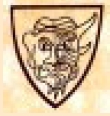
Gralhund |
Hiilgauntlet |
Gauntyl |
Husteem |
Hawkwinter |
|
Jardeth |
Kormalis |
Manthar |
Roaringhorn |
Sultlue |
Mercenary Soldier:
The likelihood of encountering any given type of mercenary is strictly
up to you as DM.
A table below shows suggested
probabilities, as well as typical numbers.
Types will seldom be mixed.
If more than 5 are encountered,
1 will be a serjeant (a
leader-type, or equivalent of a NCO).
It is urged that 1 serjeant
for every 10 troops be used as a min. figure with regard to regular soldiers
and leader types.
(Captains will have to be
hired for each sort of troop type.)
Note that regular soldiers
are 0 level men-at-arms with 4-7 HP each.
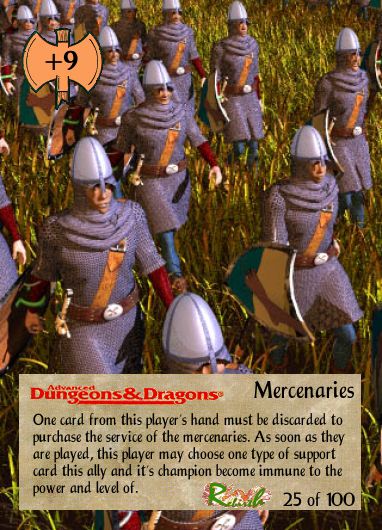
| - | - | - | Number Encountered (d10) | - | - | - |
| Dice Score | Troop Type | Cost (gp/mo.) | 1-4 | 5-7 | 8-9* | 0** |
| 01-04 | archer (longbow) | 4 | 1-4 | 2-5 | 3-12 | 5-20 |
| 05-10 | archer (shortbow) | 2 | 1-6 | 2-8 | 4-16 | 5-30 |
| 11-12 | artillerist | 5 | 1 | 2 | 3 | 4 |
| 13 | captain | special | 1 | 1 | 1 | 1 |
| 14-20 | crossbowman | 2 | 1-6 | 2-8 | 5-20 | 8-48 |
| 21-30 | footman, heavy | 2 | 1-6 | 2-12 | 5-30 | 10-60 |
| 31-37 | footman, light | 1 | 1-4 | 2-8 | 3-12 | 5-20 |
| 38-40 | footman, pikeman | 3 | 2-5 | 3-12 | 5-20 | 10-40 |
| 41 | lieutenant | special | 1 | 1 | 1 | 1 |
| 42-44 | hobilar, heavy | 3 | 1-3 | 2-5 | 3-12 | 4-16 |
| 45-48 | hobilar, light | 2 | 1-4 | 2-8 | 3-12 | 5-20 |
| 49 | horseman, archer | 6 | 1-2 | 1-6 | 2-8 | 3-12 |
| 50-53 | horseman, crossbowman | 4 | 1-4 | 2-8 | 3-12 | 5-20 |
| 54-58 | horseman, heavy | 6 | 1-3 | 2-5 | 3-12 | 4-16 |
| 59-70 | horseman, light | 3 | 1-4 | 2-8 | 4-16 | 5-30 |
| 71-78 | horseman, medium | 4 | 1-3 | 2-5 | 3-12 | 4-16 |
| 79-80 | sapper/miner | 4 | 1-2 | 1-4 | 2-5 | 2-8 |
| 81-85 | serjeant | special | 1 | 1 | 1-2 | 1-3 |
| 86-88 | slinger | 3 | 1-3 | 1-6 | 2-8 | 3-12 |
| 89-90 | SELECT ANY TYPE OF MISSILE TROOP | - | - | - | - | - |
| 91-96 | SELECT ANY TYPE OF FOOTMAN | - | - | - | - | - |
| 97-99 | SELECT ANY TYPE OF HORSEMAN | - | - | - | - | - |
| 00 | SELECT ANY TYPE OF SPECIALIST OR LEADER | - | - | - | - | - |
* With lieutenant if more
than 10 soldiers.
** With lieutenant if more
than 10 soldiers, with captain if more than 20 soldiers.
<the cost column was just added for easy reference>
AC:
MV:
HD:
hp:
SA:
SD:
AL:
THACO:
D:
XP:
#A:
<the 4 gp/mo. was just added for easy ref., and to re-emph that mercs are just another form of q>
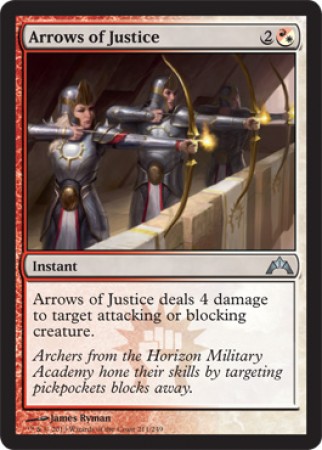
These troops will be able
to operate as light infantry <(light footmen)>
when not employing bows.
They can use any typical
weapon, for they must be strong and in good health.
COST: 4 gp / mo.
AC:
MV:
HD: 0 level
hp: 4-7 (d4+3)
SA: none
SD: none
AL: N
THACO: 20n
D: 1-6
XP: 14+1
#A:
MONTHLY WAGE: 80 sp
EQUIPMENT COST: 79 gp
MOVEMENT RATE: 90
ARMOUR CLASS: 7
DAMAGE: 1d6
RANGE INCREMENT: 70
- OSRIC, page 129
Archer
(shortbow), 2 gp/mo.: These troops will
not fight as infantry when not using their bows,
unless it is a desperate
situation.
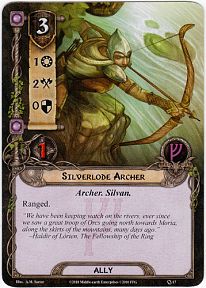
In extremis they will
fight as light infantry using short
swords, hand axes, and similar
weapons.
(You may desire to allow
certain types - such as the historical Viking warrior types -- to be exceptional.
If so, these individuals
will certainly demand longbowman’s wages.)
COST: 2 gp / mo.
AC:
MV:
HD: 0 level
hp: 4-7 (d4+3)
SA: none
SD: none
AL: N
THACO: 20n
D: 1-6
XP: 14+1
#A:
MONTHLY WAGE: 40 sp
EQUIPMENT COST: 34 gp
MOVEMENT RATE: 90
ARMOUR CLASS: 7
DAMAGE: 1d6
RANGE INCREMENT: 50
- OSRIC, page 129
Artillerist:
These troops are required to operate any missile engines
larger than a heavy crossbow.
They will fight as light
infantry only in extremis.
COST: 5 gp / mo.
MONTHLY WAGE: 100 sp
EQUIPMENT COST: 25 gp
MOVEMENT RATE: 90
ARMOUR CLASS: 7
DAMAGE: 1d6 or 1d4
RANGE INCREMENT: 10
- OSRIC, page 129
Captain: (500 gp/mo, 600 gp/mo, 700 gp/mo, 800 gp/mo)

<image is close, but the white center background is a problem if the main page background is black>
A captain is nothing more
than a capable leader, a fighter of 5th,
6th.
7th,
or 8th level
(according to the d10 score,
1-4 = 5th, 5-7 = 6th 8-9 = 7th, 0 = 8th) but NOT capable of working upwards.
A captain can command as
many scores of troops as he or she has levels,
i.e., 4th level enables
command of 80 men, 5th level enables command of 100 men, etc.
In addition, the level of
the captain dictates the number of lieutenants which con be controlled.
This is exclusive of serjeants
and any auxiliary types such as servants, cooks, etc.
The monthly cost of a captain
is 100 gp per level.
COST: special
MONTHLY WAGE: Special
EQUIPMENT COST: as type
MOVEMENT RATE: as type
ARMOUR CLASS: as type
DAMAGE: as type
RANGE INCREMENT: as type
- OSRIC, page 129
Crossbowman, 2 gp/mo.: These soldiers are able to use any sort of crossbow furnished.
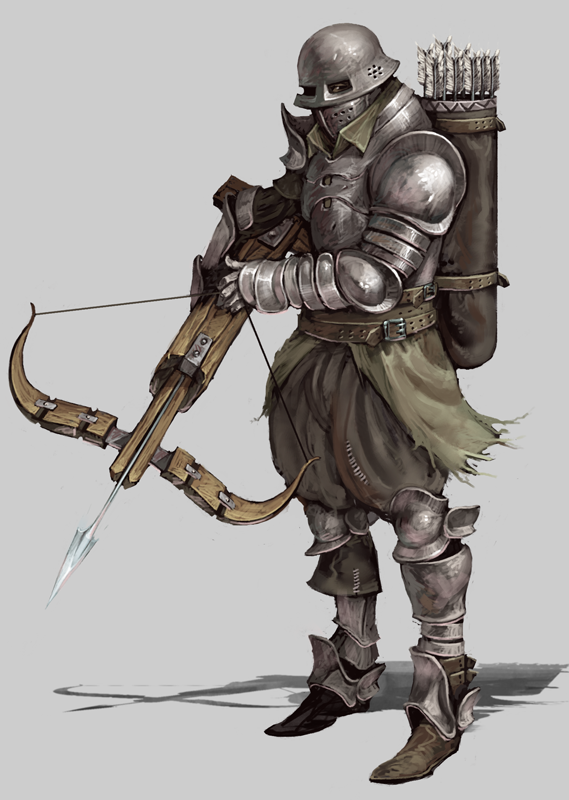
Each heavy crossbowman will
typically desire a light infantryman to accompany
him to act as a shield bearer.
Crossbowmen will bear hand-held
weapons and fight as light foot if meleed by enemy
troops.
COST: 2 gp / mo.
AC:
MV:
HD: 0 level
hp: 4-7 (d4+3)
SA: none
SD: none
AL: N
THACO: 20n
D:
XP: 14+1
#A:
Heavy
Crossbow, quiver (1 score cap.), 20 heavy bolts
MONTHLY WAGE: 40 sp
EQUIPMENT COST: 31 gp
MOVEMENT RATE: 90
ARMOUR CLASS: 7
DAMAGE: 1d4+1 or 1d6
RANGE INCREMENT: 60
- OSRIC, page 129
company of 60 crossbowmen,
chain mail;
40 with
heavy crossbow and short sword,
20 with
light crossbow and military fork
- fighter

These troops are trained
to fight in close formation.
They do so regardless of
the type of armor thay are equipped with.
Weaponry can be sword and
shield, axe and shield, pole arms, etc.
COST: 2 gp / mo.
<**
=
Footman, Heavy (Heavy
Swordsman) :
AC = 4,
MV 9",
HD 0 level,
hp 4-7 (d4+3),
SA none,
SD none,
AL N,
THACO 20n,
D 1-8,
XP 10 + 1 :
chain mail & medium
[2] shield & sword,
DMG.31
>
<**
=
Footman, Heavy (Heavy
Axeman) :
AC = 4,
MV 9",
HD 0 level,
hp 4-7 (d4+3),
SA none,
SD none,
AL N,
THACO 20n,
D 1-8,
XP 10 + 1 :
chain mail & medium
[2] shield & battle axe,
DMG.31
>
<**
=
Footman, Heavy (Heavy
Polehead) :
AC = 5,
MV 9",
HD 0 level,
hp 4-7 (d4+3),
SA none,
SD none,
AL N,
THACO 20n,
D 1-8,
XP 10 + 1 :
chain mail & pole
arm,
DMG.31
>
MONTHLY WAGE: 40
sp
EQUIPMENT COST: 62 gp
MOVEMENT RATE: 60
ARMOUR CLASS: 6
DAMAGE: 1d10 or 1d6
RANGE INCREMENT: n/a
- OSRIC, page 129
heavy infantry, splint mail,
battle axe and long sword
heavy infantry, chain mail,
pole
arm* and hand axe
heavy infantry, ring mail,
heavy crossbow and short sword
- cleric
company of 100 heavy infantry,
scale mail; pole arm* and club
- fighter
company of 80
heavy infantry --
20 with
splint mail,
60 with
leather armor;
20 with
morning star and hand axe,
60 with
pike and short sword
- fighter
Footman, Heavy (Mounted)
MONTHLY WAGE: 60 sp
EQUIPMENT COST: 99 gp
MOVEMENT RATE: 240 or 60
ARMOUR CLASS: 6
DAMAGE: 1d10 or 1d6
RANGE INCREMENT: n/a
- OSRIC, page 129
Footman,
light: These soldiers do not fight in close formation.
They are useful in rough
terrain, woods, etc.
COST: 1 gp / mo.
<**
= the following is just a guess/example : useful in a pinch. a could be
/ not is. - I should coin this, add it to the GLOSSARY, and link to it
:
Footman, Light :
AC = 8,
MV 9",
HD 0 level,
hp 4-7 (d4+3),
SA none,
SD none,
AL N,
THACO 20n,
D 1-6,
XP 10 + 1 :
padded armor & spear,
DMG.31
>
MONTHLY WAGE: 20 sp
EQUIPMENT COST: 32 gp
MOVEMENT RATE: 90
ARMOUR CLASS: 6
DAMAGE: 1d6
RANGE INCREMENT: 15
- OSRIC, page 129
light infantry, padded armor
& shield, spear and club
- cleric
Footman, Light (Mounted)
MONTHLY WAGE: 40 sp
EQUIPMENT COST: 69 gp
MOVEMENT RATE: 240 or 90
ARMOUR CLASS: 6
DAMAGE: 1d6
RANGE INCREMENT: 15
- OSRIC, page 129
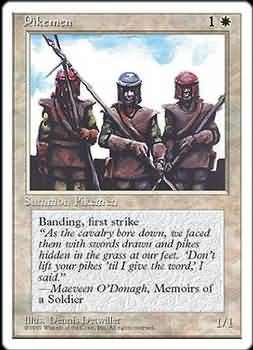
These soldiers are heavy
foot who are especially trained to fight with pikes and also maneuver with
them.
Mercenary pikemen will be
high quality (not militia or levy quality).
Heavy footmen can be placed
in the center of a pike formation of 100 or more troops,
if these troops have trained
for not less than two months with the pikemen.
COST: 3 gp / mo.
<
Footman, Pikeman
:
AC = 5,
MV 9",
HD 0 level,
hp 4-7 (d4+3),
SA none,
SD none,
AL N,
THACO 20n,
D 1-6/1-12,
XP 10 + 1 :
chain
mail & pike,
DMG.31
>
MONTHLY WAGE: 60 sp
EQUIPMENT COST: 59 gp
MOVEMENT RATE: 60
ARMOUR CLASS: 6
DAMAGE: 1d6+1 or 1d6
RANGE INCREMENT: n/a
- OSRIC, page 129
Hobilar,
heavy or light: These troops are simply mounted infantry, able to use
horses to move but not capable of mounted combat.
Thus, hobilars ride to battle
but dismount to fight.
Some provision must be made
to care for the horses, or the hobilars will leave 25% of their number
behind to do so.
COST: 3 gp / mo. (Hobilar,
heavy)
COST: 2 gp / mo. (Hobilar,
light)
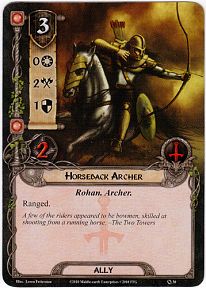
"A few of the riders appeared to be bowmen, skilled at shooting from a running horse." - The Two Towers
These light troops are generally
nomadic types, undisciplined and prone to looting. <(an exception to
this would be the Turcopoles
mentioned in Chainmail).>
They will fight hand-to-hand
only if circumstances force this action upon them.
They can wear leather, ring,
or chain mail, and they can carry small shields for use when not plying
their bows.
COST: 6 gp / mo.
<
Horseman, Archer
:
AC = ,
MV ",
HD 0 level,
hp 4-7 (d4+3),
SA none,
SD none,
AL N,
THACO 20n,
D /,
XP :,
DMG.31
>
Horseman,
crossbowman: All such troops are armed with light crossbows, as heavy
weapons are not usable on horseback.
They are light troops, but
they can wear any sort of armor. They will wield handheld weapons in combat
if necessary.
COST: 4 gp / mo.
MONTHLY WAGE: 80 sp
EQUIPMENT COST: 197 gp
MOVEMENT RATE: 240 or 90
ARMOUR CLASS: 7
DAMAGE: 1d4+1 or 1d6
RANGE INCREMENT: 60
- OSRIC, page 129

These soldiers are trained
to operate in close formation (stirrup-to-stirrup).
They are able to use most
weapons common to horsemen.
COST: 6 gp / mo.
MONTHLY WAGE: 120 sp
EQUIPMENT COST: 675 gp
MOVEMENT RATE: 150 or 90
ARMOUR CLASS: 4
DAMAGE: 2d4+1 or 1d8
RANGE INCREMENT: n/a
- OSRIC, page 129
heavy cavalry, plate mail
& shield, lance, broad sword, and mace
- cleric
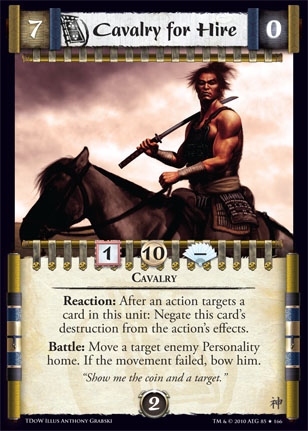
These troops are not trained to operate in close order or formation. They are useful skirmish-raider types only.
COST: 3 gp / mo.
MONTHLY WAGE: 60 sp
EQUIPMENT COST: 294 gp
MOVEMENT RATE: 240 or 90
ARMOUR CLASS: 6
DAMAGE: 2d4+1 or 1d6
RANGE INCREMENT: n/a
- OSRIC, page 129
light cavalry, studded leather
& shield, light crossbow and pick
- cleric
company of 20 light cavalry,
ring mail & shield; 3 javelins, long sword, hand axe;
- fighter
Horseman,
medium: Similar to heavy cavalry, medium horsemen are trained to operate
in formation,
but they are generally smaller
individuals on lighter horses and do not ride as close to their fellows.
COST: 4 gp / mo.
MONTHLY WAGE: 80 sp
EQUIPMENT COST: 465 gp
MOVEMENT RATE: 180 or 60
ARMOUR CLASS: 5
DAMAGE: 2d4+1 or 2d4
RANGE INCREMENT: n/a
- OSRIC, page 129
medium cavalry, chain mail
& shield, lance, flail and short sword
- cleric
Lieutenant:
A lieutenant is an assistant
to a captain, or a leader in his or her own right.
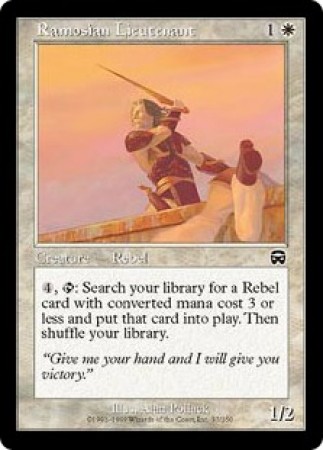
Fighter level is 2nd (d10
score 1-7) or 3rd (d10 score 8-0),
and the lieutenant can command
as many decades of troops as he or she has levels.
This is exclusive of serjeants,
of course.
A lieutenant serving under
a captain extends the number of troops the captain can effectively command
and control.
The level of a lieutenant
determines how many serjeants he or she is able to direct,
these in addition to those
normally serving with the troops,
i.e., 2 or 3 additional
serjeants who can do special duty.
The monthly cost of a lieutenant
is 100 gold pieces per level. They cannot
progress in level.
COST: special
<
Roll d10
1-7 =
Lieutenant A (F2)
8-10
= Lieutenant B (F3)
Lieutenant
A :
![]()
AC = 3, MV 6", HD F2., hp
2d10 (min. 6 at L1), SA none, SD none, AL N, #AT 3/2, THACO 16, D 1-8 +
3, XP 35 + 3 : plate mail & medium [2] shield & sword (specialist),
DMG.33/31
Lieutenant
B :
![]()
AC = 3, MV 6", HD
F3., hp 3d10 (min. 6 at L1), SA none, SD none, AL N, #AT 3/2, THACO 15,
D 1-8 + 3, XP 60 + 4 : plate mail & medium [2] shield & sword (double
specialist), DMG.33/31
>
<gold & platinum: revise F3, above>
MONTHLY WAGE: Special
EQUIPMENT COST: as type
MOVEMENT RATE: as type
ARMOUR CLASS: as type
DAMAGE: as type
RANGE INCREMENT: as type
- OSRIC, page 129
Sapper/Miner:
These troops are required for any military operations which involve use
of siege machinery, towers, trenches, mines, etc.
Although they will fight
only to preserve their lives, they do fight as heavy
footmen.
They normally wear only
light armor because of their duties -- leather or studded leather if they
are active.
COST: 4 gp / mo.

A serjeant is the leader
of a small body of troops, a non-commissioned officer equivalent.
All serjeants are Veterans
(F1s) but incapable of progressing further.
A serjeant can command up
to 10 soldiers as an independent unit or assure orders from lieutenants
or a captain are carried out.
There must be 1 serjeant
minimum for every 10 regular soldiers, and there can be 1 per 5 .
The monthly cost for a serjeant
is 10 times the rate of the troops he or she commands,
so a serjeant of heavy horsemen
costs 60 gold pieces, one of light footmen only 10.
COST: special
<
Serjeant
:
AC =
3, MV 9", HD F1, hp d10 (min. 6), SA none, SD none, AL N, #AT 3/2, THACO
19, D 1-8 + 2, XP 20 + 2 : banded mail & medium [2] shield & sword
(specialist), DMG.31/33
>
MONTHLY WAGE: Special
EQUIPMENT COST: as type
MOVEMENT RATE: as type
ARMOUR CLASS: as type
DAMAGE: as type
RANGE INCREMENT: as type
- OSRIC, page 129
Slinger:
Slingers are trained from youth up (as are longbowmen), and are thus rarely
encountered.
They can wear leather (including
studded leather), padded, or ring mail only,
but they are also able to
employ small shields at the same time as they ply their slings.
They are always light infantry,
and they are able to use
only lesser handheld weapons such as hand axes, clubs, short swords, and
daggers.
COST: 3 gp / mo.
Optional Rule: At
the discretion of the GM, a player
character fighter of the
appro. level may serve as a serjeant,
lieutenant, or captain,
as might an allied NPC
fighter or henchman. A character
of a related class, such
as ranger or paladin, might
also suffice if the circumstances
warrant such an allowance.
- OSRIC, page 131

There can be various units
of non-human troops available for mercenary duty,
but this depends upon your
milieu.
It is suggested that as
a general rule such troops be enlisted only where they actually dwell,
and only if the player character
champions their cause or is a minion of their alignment, religion, or the
like, or is a racial hero.
The types of soldiers available
depends entirely on the race (see MONSTER MANUAL
for such informatioh).
The less intelligent non-humans
will serve for from 10% to 60% less cost,
but these evil creatures
will certainly expect to loot, pillage, and rape freely at every chance,
and kill (and probably eat) captives.
Dwarves
will serve at double rates, or at normal rates if they are basically aiding
a champion of their cause and people.
Gnomes and halflings will
only serve in the latter case.
Elves are a difficult case
to handle, for they might serve against hated foes, or for a cause,
but in either event probably
for greater cost or special considerations only.
Half humans such as half-elves
&& half-orcs might be found amongst either human contingents or
with those of their non-human parent race. Possible non-human soldiers
are:
^ bugbears
^ +
dwarves
+
elves +
gnolls +
gnomes +
goblins +
halflings +
hobgoblins +
kobolds +
lizard men +
orcs +
<FF>
<MM2>
AT A GLANCE:
There are a large number of private groups unaligned to king or crown,
who fight solely for gold and possible loot.
These groups, the Mercenary Companies, are a common gathering point
for exceptional individuals who may change the course of the history of
the Realms.
ELMINSTER'S NOTES:
Many mercenary companies, large and small, exist in the Realms, and
are constantly appearing and disappearing with the passage of the seasons,
so that no complete roster is possible.
Listed below are some of the more prominent outfits active in the North,
the Inner Sea lands, and the long trade route between them.
Mercenary companies are long-established and famous institutions in
the uneasy Forgotten Realms.
Perhaps the most famous companies, now disbanded, were the "Moonlight
Men" and the later "Midnight Men", which still exist as a shadowy brotherhood
rather than as a fighting force.
Both groups lasted for a generation, though their exploits and battles
are known from Waterdeep to Thay.
Some groups have maintained a hereditary tradition, and in very rare
cases (such as House Obarskyr in Cormyr) formed the basis of nations and
dynasties.
Humans are not the only group which maintains mercenary forces. There
are four ogre mercenary bankds: the Shard, the Blue Sigil, the Shieldbreakers,
and the Teeth.
There is also a company of troll mercenaries, The Claw, siad to be
under the control of either powerful spell-casters or illithids (mind flayers).
A few of the current human companies are discussed below, with game
notes on each company.
General game information on hiring mercenaries follows this entry.
Blacktalons Mercenary Company
Based in Iriaebor, the Blacktalons do most of their
business on the trade-routes east and west of that city, either as a large
and well-armed guard for a valuable caravan, or as hired raiders of caravans
guarded by someone else.
There are those who whisper that the Blacktalons sometimes attack caravans
"for free", just to make those who didn't hire them as guards wish they
had.
The Blacktalons are led by Taurgosz "Tenhammer" Khosann, and are headquartered
in a small citadel built against the inside southeast wall of the city.
The Blacktalons are generally on good terms with the city; their occasional
hijinks are ignored due to their timely aid as city defenders in times
of trouble.
GAME INFORMATION: There are 110-120 men-at-arms in
the Blacktalons group, fairly typical for a small mercenary operation.
What sets the Blacktalons apart is that 80 of these
number are fighters of levels 2-4.
Their leader, "Tenhammer" Khosann, is a 9th level
fighter.
Bloodaxe Mercenary Company
Based in Sundabar, the Bloodaxes were founded some
forty winters ago, originally as a Dwarvish organization.
An outcast group of swarves known as the "transgressors", for their
crimes or acts no in the teaching of Moradin Soulforger, were cast out
of Adbarrim (that area of dwarven subterranean lands beneath Citadel Adbar,
in the North) and began hiring out as fighting-men to whoever in the North
would pay them.
In the fulfillment of such commissions the Bloodaxes fought several
bandit-bands, and army of orcs under Eldoul, father of the present King
Graul, Lord of the Northern Orcs, and overland raiders from Luskan.
In these contests (most of which they were not expected to win), many
of the original dwarven warriors wer slain, and replacements were recruited
in Baldur's Gate, Westgate, and the Vilhon Reach by the dwarven adventurer
Deldagg Huldgrym.
Deldagg led the Bloodaxe Company until his death (of blacklung fever)
in 1306 DR. <>
The current leader of the Company, and Deldagg's
direct successor, is the human Velkor "of the Valiant Arm" Minairr.
The Bloodaxes are mounted spearmen, slingers, and axe-men, but they
usu. dismount to do battle.
Their veteranas presently number 60 (of which half a dozen or less
are dwarves); they can must an additional 15 or 20 if necessary.
GAME INFORMATION: The Bloodaxes number 80 individuals
of level 2, of which less than a dozen are now dwarves.
Their leader Velkor is an 11th level fighter.
The Flaming Fist
One of the largest of the mercenary companies currently
active, the Flaming Fist is usually based in Bladur's Gate, where its commander
Eltan is a Duke (see BALDUR'S GATE).
This Fist has a good record of achievements, particularly when operating
against other mercenary companies, such as the non-human bands.
The Fist numbers some 2000(!) strong and requires
the resources of a city (the city of Baldur's Gate) to keep it in supply
when it is not actively on duty.
It is the best organized of the companies, including scouts, support,
transportation, and other areas that most companies leave to their employer.
The Fist is expensive even by mercenary standards, due to its numbers
and due to the face that NONE of its front-line troops are of less than
5th level.
This makes The Fist an incredible weapon on the battlefield, but only
to be afforded by nations or teh very, very wealthy (and very, very angry).
GAME INFORMATION: The Flaming Fist, the most powerful
mercenary organization in the Known Realms, is fully detailed in the DM's
Sourcebook of the Realms.
Players intending to take over the world should
be made aware of the existence of such organizations.
Mindulgulph Mercenary Company
Based in Priapurl, the Mindulgulphs are perhaps
the most unique hireswords in the Realms; they are a band of seasoned warriors
of all races, including some not normally thought of as intelligent, such
as cave fishers and mimics.
The leader of this band of misfits is the extremely charismatic Gayrlana,
"Lady Bloodsword", who is a tactical genius, exploiting the varied natural
talents of her troops to the full.
Gayrlana is famous for slaying Thongh Mirr, a Red Wizard of Thay, in
the streets of Teziirr in single combat.
She explained this feat with the words, "the blade is faster than the
Art", and those words have become a popular saying in the Realms today.
The Mindulgulphs can field 70 mounted, armored men-at-arms,
but their total strength, "weird" monsters included, is thought to be around
180.
Gayrlana's stronghold is a pinnacle-top castle called Mindulgulph,
in the hills above Priapurl; it is reputed to be guarded constantly by
many of the Company "monsters".
The Company offices in Priapurl are next to the Dark Arch Inn.
GAME INFORMATION: Gayrlana is a level 10 fighter
with 18 charisma and, if the DM chooses to use psionic abilities, the psionic
discipline of telepathy.
She has weapons specialization in both long sword
and whipsting.
The latter is a very slender sword from the southern
lands beyond Unther, which inflicts 1-6 points of damage (regardless of
size), and may be used as a whip as well.
The exact make-up of Lady
Bloodsword's band is unknown, and reports change over time with old creatures
leaving (or being eaten) and new creatures joining.
The Order of the Blue Boar
Based in Castle Spulzeer (in Amn), this Order is
group restricted in membership to experienced, veteran fighters of some
wealth, each of whom must be approved by the "Boar's Heads", or governing
council of seven warriors.
The council maintains a membership roll of "Swords" (approved members),
each of whom they can expel at will for unprofessional conduct.
Members can elect to participate or not to participate in any Order
activities (if there are too many applicants for a small-fee job, membership
seniority is used to decide who'll take part).
Each participating member takes a share of the fee, and can take part
alone or involve any assistants/agents (other beings who are not members,
including mages, fighting-men, and even trained beasts) they wish, although
they are responsible for the deeds, payment, and care of hirelings.
Some members crippled by age, disease, or battle-wounds, can no longer
ride to battle, and are always represented by their hirelings, who, if
their service meets the council's standards, may well themselves later
become members.
The collective experience of the Order's members has earned it the
reputation of being wary, cunning, and alert in its endeavors-for-hire,
even though its method of sharing fees generally means that comparatively
few weapon-bearers take the field when the Order is hired.
The active membership of the Order is known only to the Heads, although
most Order members in any given area know each other, but its total is
thought to be around 400 at full muster.
Many adventurers belong to the Order, however, and may be unavailable
for particular tasks due to their own ongoing activities (or recovery from
such).
The Order's badge is a blue boar's head with open mouth and tusks,
facing the dexter (right), usually depicted on a red, russet, or silvery
metal field.
GAME INFORMATION: The levels and abilities of the
Order vary with its members, which range from 3rd to 10th level, but tend
to average about 6th.
The Council determines numbers, leaders, and levels
to be assigned to a particualr mission, and those seeking thier aid must
apply in person (or by servant) to their Amnish headquarters.
These "Boar's Heads" are all fighters, and all lawful-neutral.
They are:
Thantan Rhyrdyl, 12th level
Sinnom Thul, 9th level
Ghont Tavvas, 10th level
Gaurundur Thasz, 10th level
Bromdurr Tathen, 11th level
Dustar Klathor, 11th level
Ristamar Rhaal, 10th level
GAME INFORMATION:
Mercenary Bands in general are expensive, all the moreso if they are
good.
A typical man-at-arms in the prominent outfits described here earns
1 sp/day (plus 5 cp if the employer cannot supply food and drink);
a 5th level or higher fighter earns 1 gp/day plus, usually, bonuses
for specific achievements, and a share of any treasure or loot gained.
Smaller operations, and those less known, may be negotiated downwards,
but given large forces, most city-states can afford only a small part of
a large force.
In addition to the "standard" price above, several other points are usually negotiable.
* Split of plunder, if any is to be gained.
Mercenaries involved in siegework, a long and painful
task, will always bargain for a chunk of the besieged city or castle.
* Risk. Dangerous situations (over and above walking
onto a battlefield in the middle of war) may require additional incentives.
Such situations include: fighting foes led by powerful
beings from other planes, fighting nations with set magical schools (such
as the war wizards of Cormyr), and attacking factions noted for long memories
and vengeance.
* Transportation. A mercenary company is responsible
for its own transportation.
If a hirer wishes to make sure the mercenary company
arrives at teh set date at the set time, a "travel allowance" may be set
aside.
While such moneys are refundable, usually that allotment
is always used in moving the organization into place.
* Duration. Costs per day is taken from when the
terms are settled or the company elaves its quarters until either the battle,
season, or term of employment is over.
Duration should be initially set, and mercenaries
have quit the field after routing an enemy if that enemy has taken up fortified
positions and a long (unnegotiated) siege is established.
* Codes of Honor. These vary from group to group,
and include such matters as sparing the innocents and unarmed, the taking
of prisoners and whether the company or the hirer has control of those
prisoners, and the sparing of other defeated/surrendered mercenary
companies.
Mercenary companies will by and large prefer to
surrender to others of their breed than nations, for the former will only
demand money or service, while the latter has a nasty tendency to imprison
and slay those on the losing side.
* "Gifting"--a practice more common in the North
than int he Inner Sea area, it is regarded as a scam by the hirer.
The employing nation or city may sweeten the pot
by offering the mercenary captains titles, additional gold, or magical
items, which may aid them in their battles.
It is common throughout the Realms, but most used
in the reaches north of Waterdeep, where the proper gift to a mercenary
captain may lower the overall price by 10%, while an improper one may drive
the captain into the hands of another.
* Treachery--Mercenary Captains who turn on their
employers often find themselves out of work and reduced to banditry, so
the general rule is to conduct oneself in a honorable fashion.
Similarly, an employer who betrays a mercenary group
through action or failure to live up to a contract will not only find it
hard to hire more mercenaries, but will find agents of that mercenary group
hunting for him to make a lesson to other such treasonous lords.

Having men-at-arms in an
expedition is quite acceptable. If course their guild requires booty normal
pay and a share of all booty taken in the course of the adventure. Dead
members' shares go to the guild for distribution to next of kin. Failing
to liove up to the agreement is an offense that can be prosecuted in court.
This allows low-level PCs to have a greater chance of success, while higher-level ones will generally not want to give out any shares of loot gained.
Cheerio,
Gary

As hired men-at-arms are
0 Level we fugured they gor a half share.
All party members' levels
were totaled, then the men-at-arms at .5 of a level each, and that was
the number by which treasure shares were divided.
In my campaign each m-a-a was paid an up-front wage of 10 gp for a dungeon crawl of one day length.
Of course using thr LA game's monetary system, the payment up front would be more like $200, not $5,000.
Cheerio,
Gary
Re: Parties vs. Individual
Heroes
![]()
Quote:
Originally posted by
Endur
Gary,
A lot of the Fantasy novels focused on a single hero (Conan, Tarzan, etc.) or perhaps a hero and a sidekick.
How did you come up with the idea of a whole party of characters adventuring in a dungeon?
Especially since D&D grew out of tabletop wargames, and tabletop wargames tended to be 1 on 1, or 3 vs. 3 types of scenarios. Most tabletop wargames (unless they involved hidden movement) don't have a referee.
Tom

Hi Tom ![]()
Fortunately I read in a lot
of genres other than fantasy, including the historical war fiction one.
Even there, though, crafting
a story around a large cast of characters is difficult, and from such a
number one or two main protagonists, and possibly an antagonist or two
emerge.
In tabletop games, the LGTSA
would have teams of players, sometimes as many as six on a side.
There was usually one person
as unpire or referee, the one who set up the game to be played, although
that individual would sometimes play as well.
When I ran my later games
they were usually the "Man-to-Man" medieval ones, and as pretty common
on the tabletop, each player had a command figure.
A team of several defenders
would plan and cooperate to try and defeat a like team of attackers.
It wasn't much of a leap
from that to single "command figures" operating as an adventuring group.
Do keep in mind that original
D&D had provision for and pretty well assumed that each PC would hire
a few men-at-arms--the old tabletop force of soldiery ![]()
In another thread someone
was wondering how 1st level PCs in the original game survived.
Some responses mentioned
the "run away" tactic--the one we commonly used.
None I read, though, considered
the hiring of mercenaries to assist in the encounters.
All the early play groups
I knew of, those in 1972 and on through 1974 surely did that so as to give
their low-level PCs a better survival chance.
It worked very well.
Yrag and Mordenkainen both
began as 1st level, and Rob Kuntz, the main DM for their adventures, was
not prone to cutting slack for anyone.
Cheers,
Gary
Quote:
Originally Posted by Gray
Mouser
Also, regarding hirelings,
if a PC hires a group of 0 level mercenaries or acquires followers due
to reaching "name" level do you give them any information regarding the
hirelings' stats (although in the case of 0 levels this would besically
be limited to Hit Points) or are those the sole purview of the DM?
Thanks in advance.
Gray Mouser

Followers that are ranked
with levels should be treated as henchmen. Hirelings ade, as you suggest
above, only rated by HPs and what they can do--mostly bear arms. The plyer
need not know their HPs, or may have such information, at the DM's discretion.
Cheers,
Gary
*template***template*